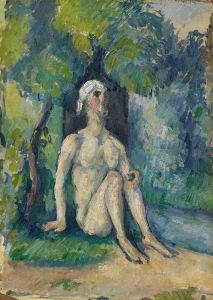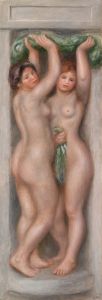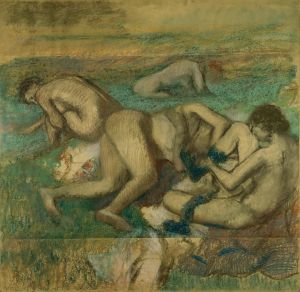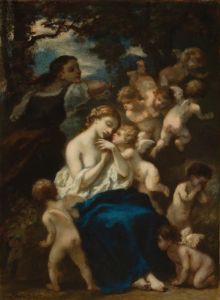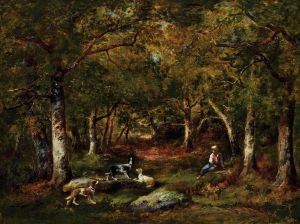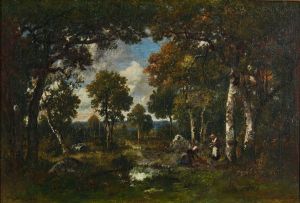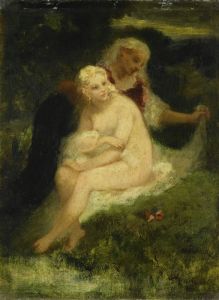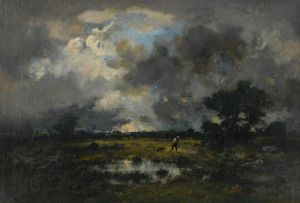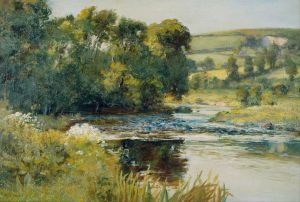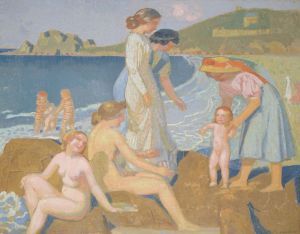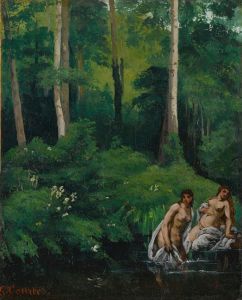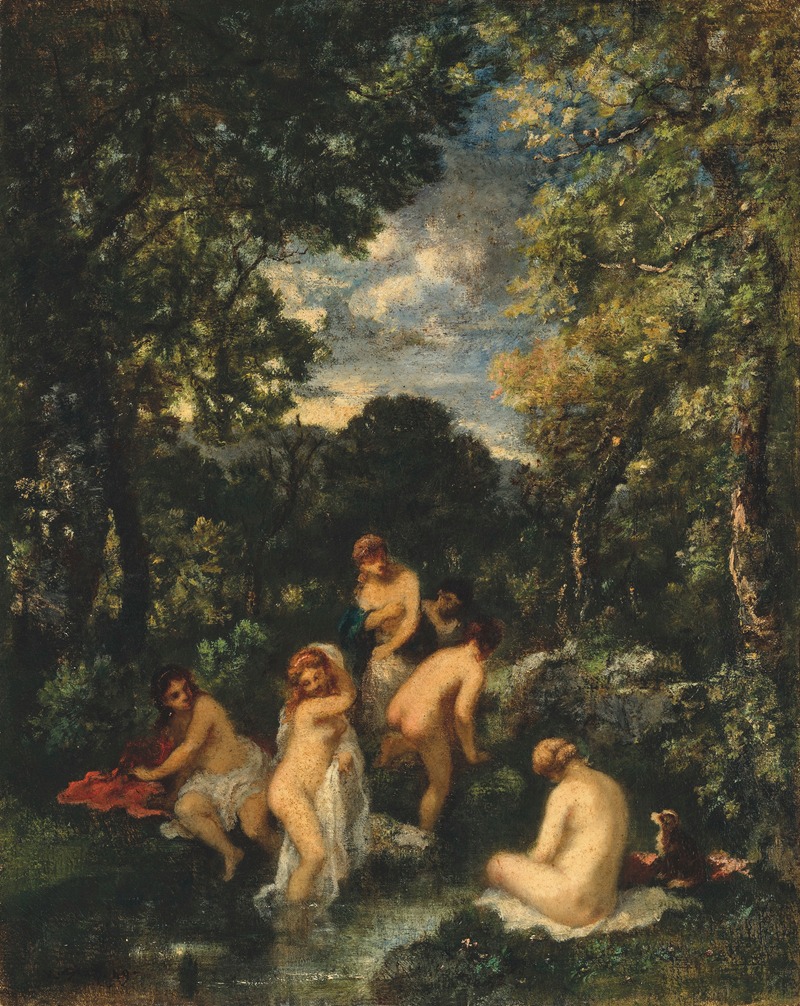
Bathers in a forest stream
A hand-painted replica of Narcisse-Virgile Diaz de La Peña’s masterpiece Bathers in a forest stream, meticulously crafted by professional artists to capture the true essence of the original. Each piece is created with museum-quality canvas and rare mineral pigments, carefully painted by experienced artists with delicate brushstrokes and rich, layered colors to perfectly recreate the texture of the original artwork. Unlike machine-printed reproductions, this hand-painted version brings the painting to life, infused with the artist’s emotions and skill in every stroke. Whether for personal collection or home decoration, it instantly elevates the artistic atmosphere of any space.
Narcisse-Virgile Diaz de la Peña was a prominent 19th-century French painter, known for his association with the Barbizon School, a movement that emphasized naturalism and the depiction of rural landscapes. Among his notable works is "Bathers in a Forest Stream," a painting that exemplifies his mastery in capturing the interplay of light and shadow within natural settings.
Diaz de la Peña was born in Bordeaux, France, in 1807, and he developed an early interest in art despite facing significant personal challenges, including the loss of a leg at a young age. His artistic journey led him to the Barbizon region, near the Forest of Fontainebleau, where he joined other artists who were moving away from the formalism of academic art to embrace a more realistic portrayal of nature.
"Bathers in a Forest Stream" reflects Diaz de la Peña's fascination with the natural world and his skill in rendering its beauty. The painting typically features a serene scene where figures, often women, are depicted bathing in a tranquil forest stream. The setting is lush and verdant, with the dense foliage of the forest creating a canopy that filters the sunlight, casting dappled patterns on the water and the figures. This use of light is characteristic of Diaz de la Peña's work, as he was particularly adept at capturing the transient effects of light and atmosphere.
The composition of "Bathers in a Forest Stream" is carefully balanced, with the figures integrated harmoniously into the landscape. Diaz de la Peña's brushwork is often described as loose and expressive, contributing to the overall sense of movement and vitality in the scene. The painting's palette is rich and varied, with deep greens and earthy tones that convey the lushness of the forest environment.
Diaz de la Peña's work was well-received during his lifetime, and he exhibited regularly at the Paris Salon. His paintings, including "Bathers in a Forest Stream," were praised for their emotive qualities and their ability to evoke the sensory experience of being in nature. While Diaz de la Peña is sometimes overshadowed by his contemporaries, such as Jean-François Millet and Théodore Rousseau, his contributions to the Barbizon School and his influence on later landscape painting are significant.
The themes explored in "Bathers in a Forest Stream" are consistent with the broader aims of the Barbizon School, which sought to depict the natural world with honesty and sensitivity. This painting, like many of Diaz de la Peña's works, invites viewers to appreciate the beauty and tranquility of nature, encouraging a deeper connection with the environment.
Today, "Bathers in a Forest Stream" is appreciated not only for its aesthetic qualities but also for its historical significance as part of the Barbizon movement. It serves as a testament to Diaz de la Peña's artistic vision and his ability to capture the essence of the natural world. His work continues to be studied and admired by art historians and enthusiasts alike, ensuring his place in the canon of 19th-century French art.






